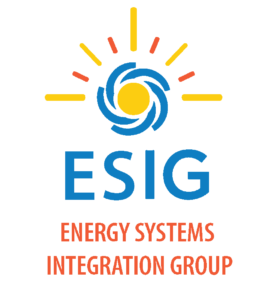GE’s 2.5 MW series is represented by three-blade, upwind, horizontal axis wind turbines with a rated capacity of 2.5-megawatts.
The rotor on a GE 2.5 MW turbine is designed to operate in an upwind configuration at 5 to 14 revolutions per minute (rpm). Rotor speed is regulated by a combination of blade pitch angle adjustment and generator/converter torque control. The 2.5 MW series provides the option of a selectable power factor between 0.90 (overexcited) and 0.90 (underexcited) and also a VAR boost, which will override watts production to deliver more VARs during emergency under-voltage conditions.
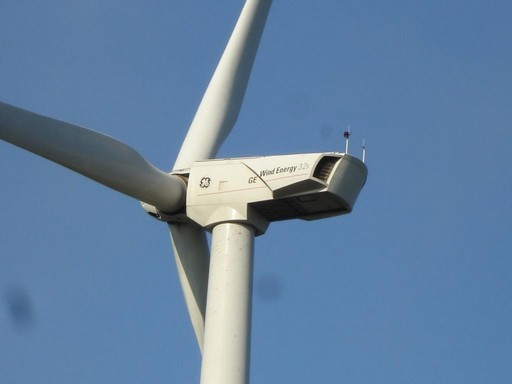 |
|
| Power Regulation | Active blade pitch control |
|---|---|
| Operating Data | |
| Rated Power | 2500 KW [1] |
| Cut-in wind speed | 3m/s (9 mph) |
| Cut-out wind speed | 25 m/s (55 mph) |
| Wind Class | IEC TC III+; IEC TC IIA; IEC TC IIB; IEC TC Ib |
| Rotor | |
| Rotor diameter | 100 m (328 ft) and 103 m (338 ft). |
| Operational interval | 5 – 14 rpm |
| Towers | |
| Type | Tubular steel tower |
| Hub heights | 85 m (279 ft) |
| Generator | |
| Type | Permanent magnet generator |
| Nominal output | 1,500 kW |
| Operational data | 690 V (50 Hz/60 Hz) |
| Gearbox | |
| Type | Three-step planetary/helical gear system with a ratio of gear 1:72 (60 HZ) |
Contents
Vendor Specific Model Characterization
Model Performance: Case 1 – Fault Event
In this case a remote fault is applied to bus 12 for a duration of 6 cycles (0.1 sec)
GE-2.5 MW – Case 1 and SCR=5
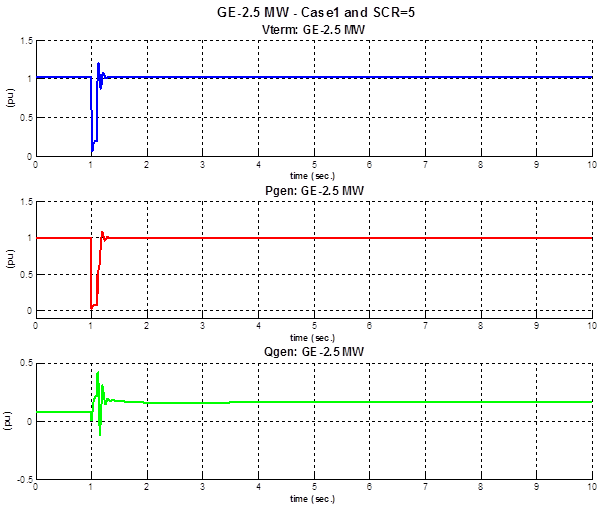
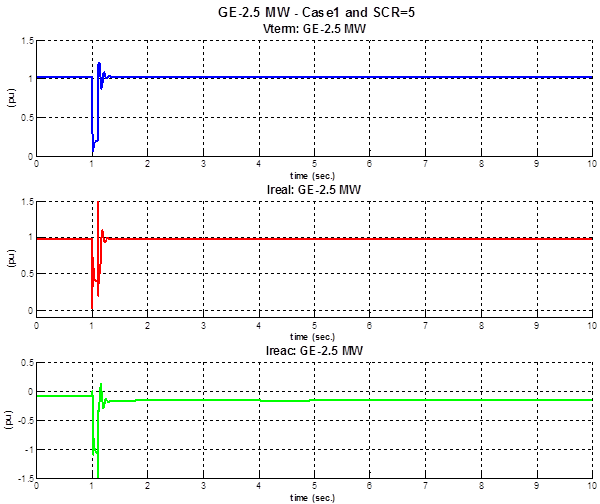
GE-2.5 MW – Case 1 and SCR=10
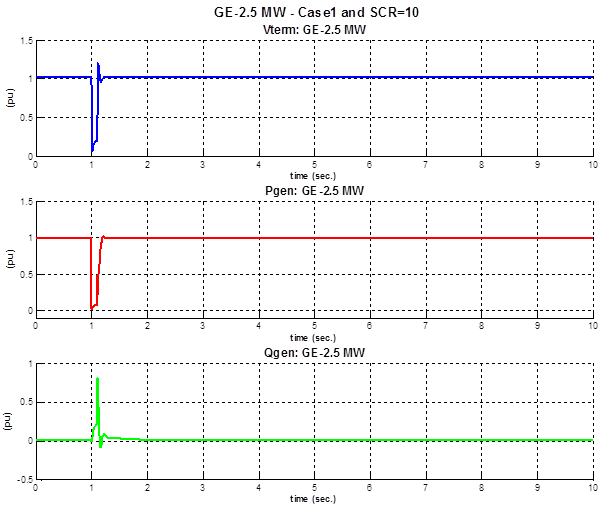
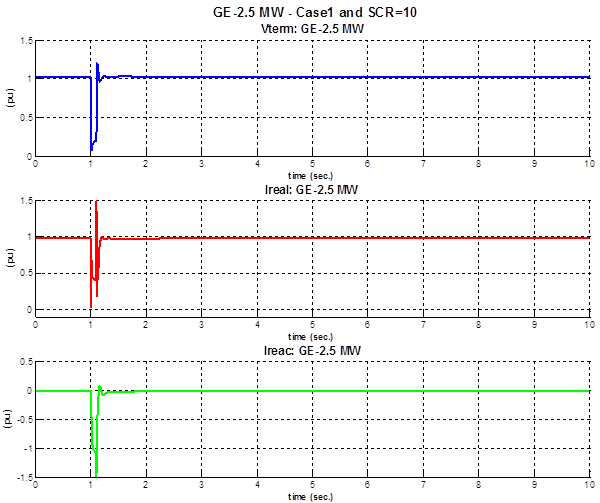
Model Performance: Case 2 – Under-Frequency Event
In this case a under frequency event is created by tripping the 100 MVA generation unit at bus 20
GE-2.5 MW – Case 2 and SCR=5
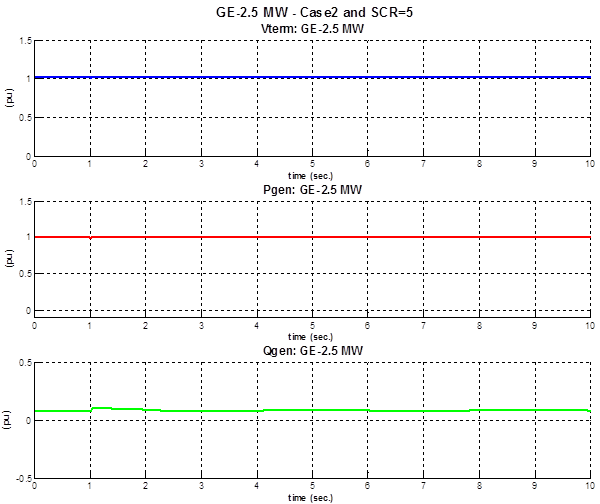
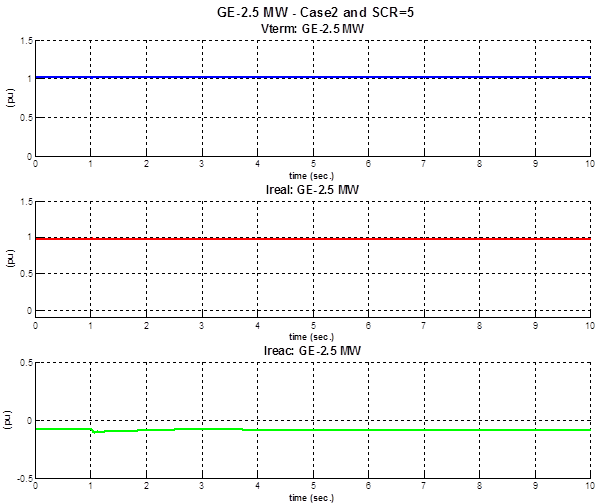
GE-2.5 MW – Case 2 and SCR=10
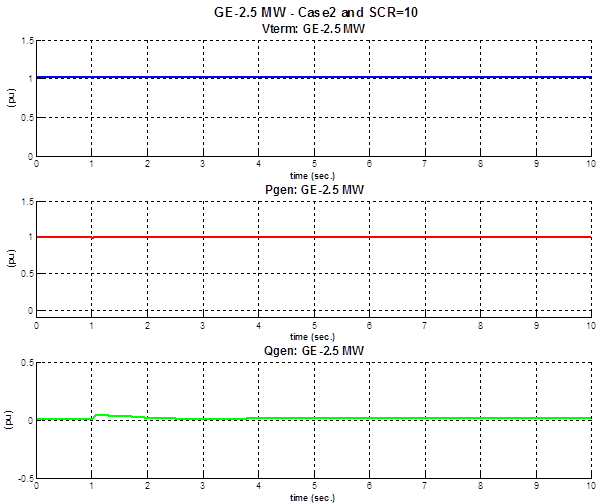

Model Performance: Case 3 – Over-Frequency Event
In this case a under frequency event is created by tripping the 100 MVA load at bus 11
GE-2.5 MW – Case 3 and SCR=5
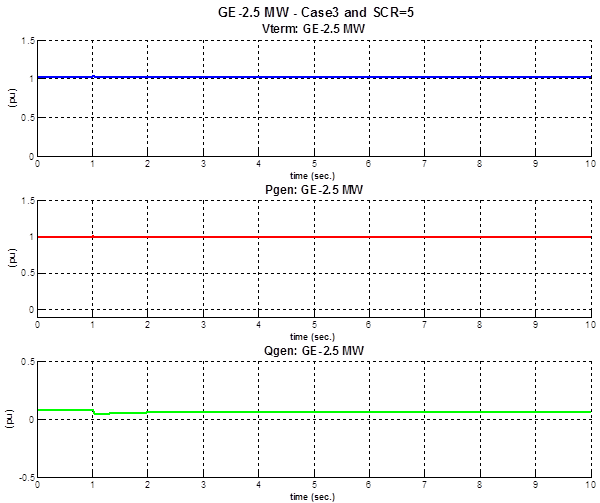
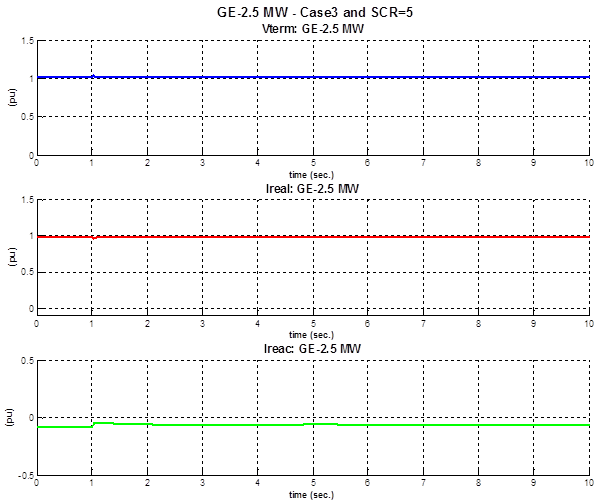
GE-2.5 MW – Case 3 and SCR=10

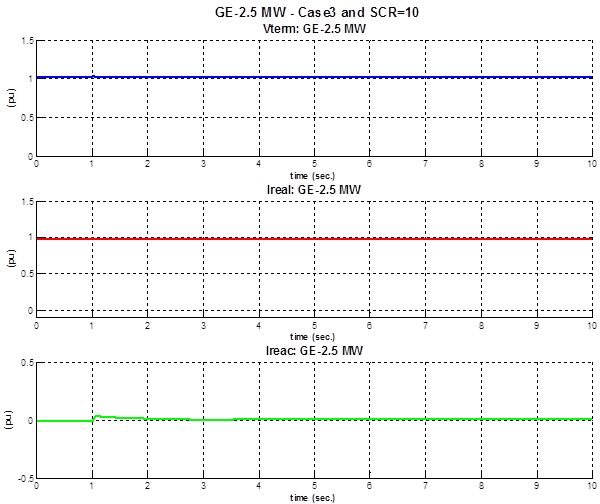
Parameterization – PSLF Environment
The parameter values shown in the table resulted from a compromise between the simulated cases (i.e. SCR 5 and SCR 10) and network conditions (i.e. fault, under- and over frequency)
|
There are three generic wind turbine models in PSLF for a type 4 wind turbine (WT4). These models are wt4g, wt4t, and wt4e. The wt4g model includes the generator and converters dynamics. The wt4t model includes the wind aerodynamic model and the wind turbine model. Finally, the wt4e model contains the real and reactive control models. The values for the parameters resulted from a compromise between the two cases (SCR 5 and SCR 10). The set of parameters had to be tuned to satisfactory match the results of dynamic simulation for the VSM and the generic WT4 model for both SCR cases. | |||||||||||||||||||||||||||||||||||||||||||||||||||||||||||||||||||||||||||||||
Parameterization: Case 1 – Fault Event
Parameterization of WT4 vs GE-2.5 MW – Case 1 and SCR=5
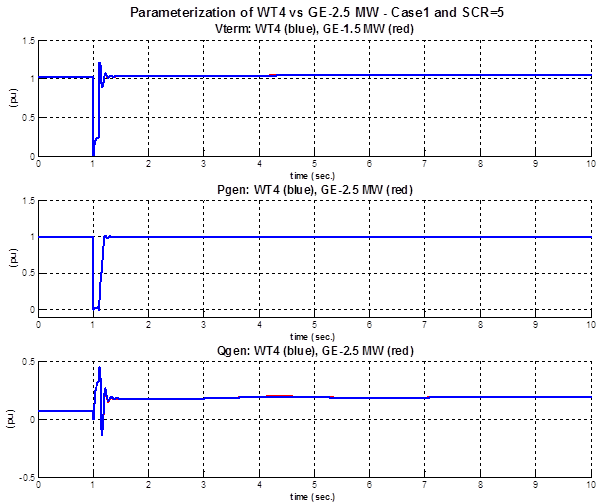
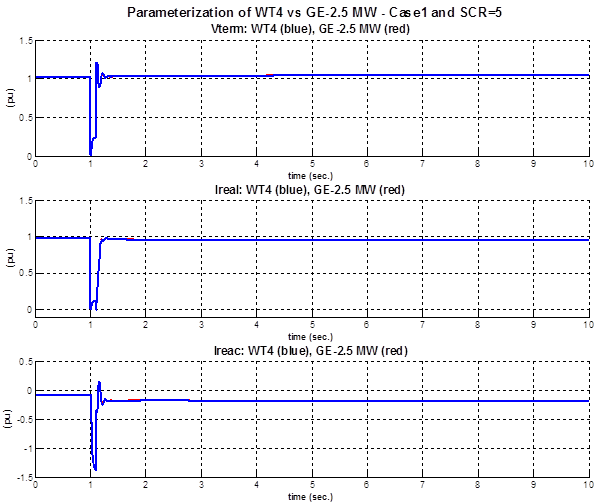
Parameterization of WT4 vs GE-2.5 MW – Case 1 and SCR=10
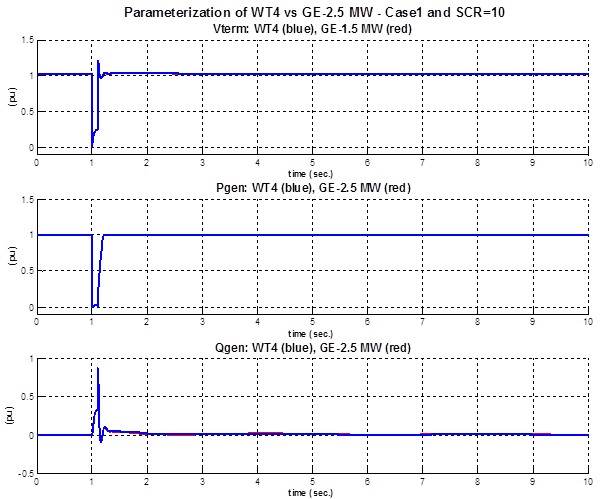
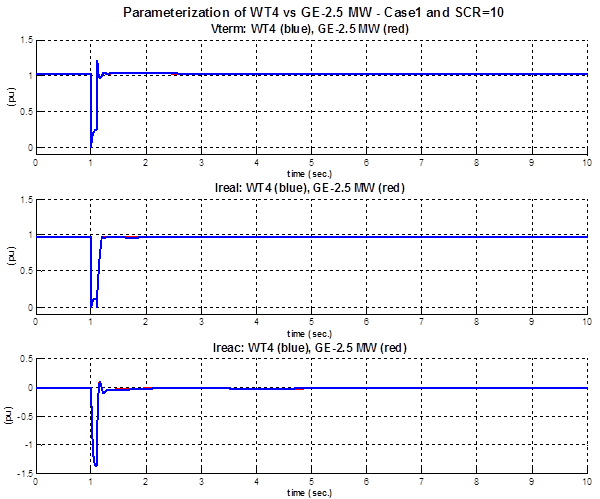
Parameterization: Case 2 – Under-Frequency Event
Parameterization of WT4 vs GE-2.5 MW – Case 2 and SCR=5
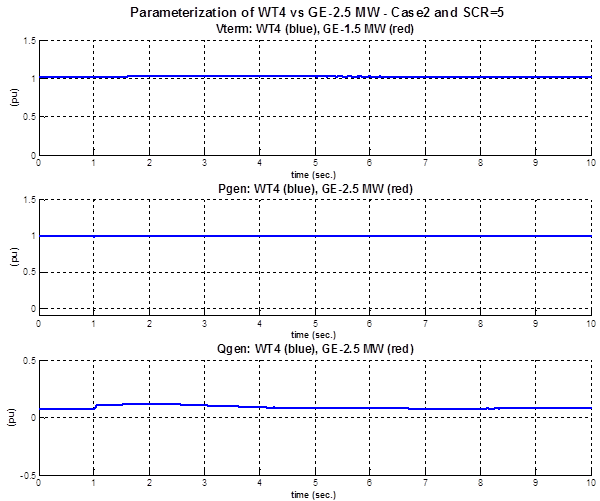
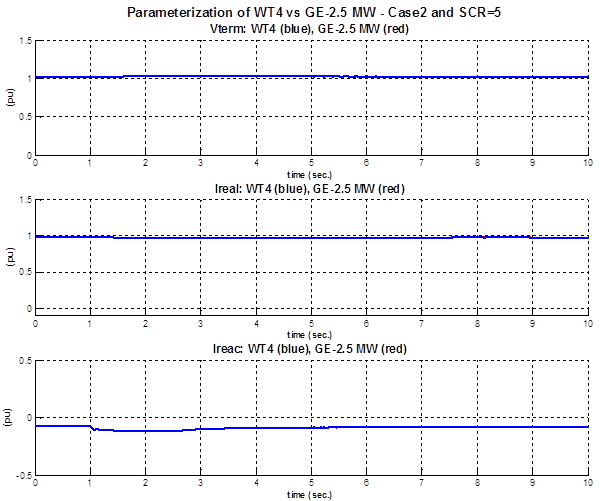
Parameterization of WT4 vs GE-2.5 MW – Case 2 and SCR=10
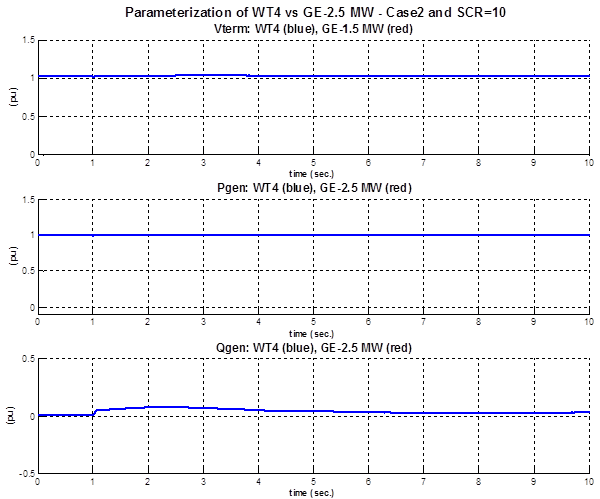
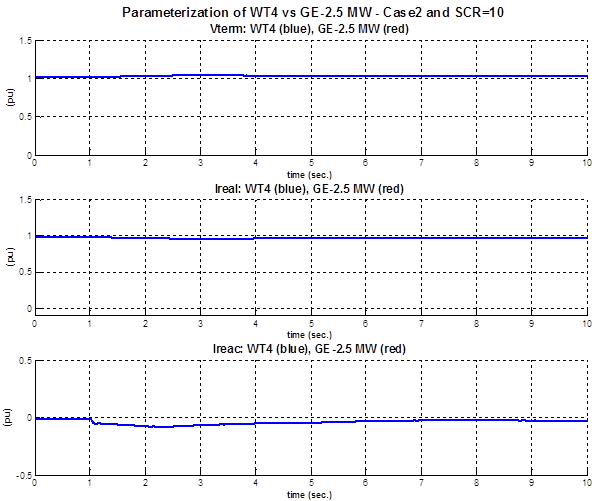
Parameterization: Case 3 – Over-Frequency Event
Parameterization of WT4 vs GE-2.5 MW – Case 3 and SCR=5
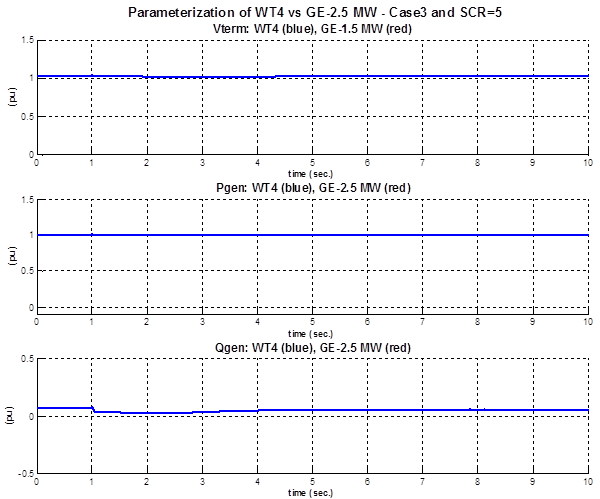
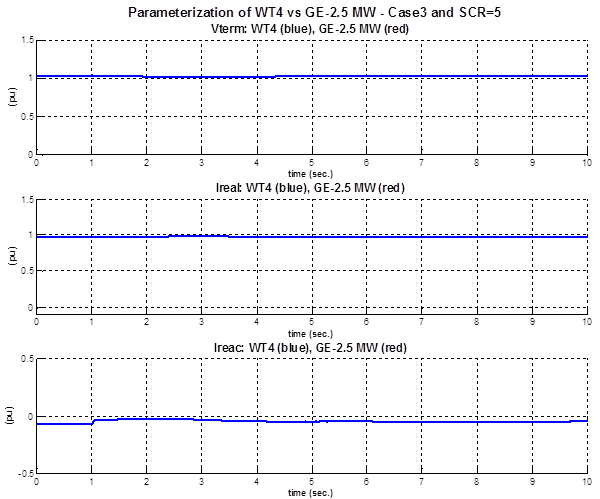
Parameterization of WT4 vs GE-2.5 MW – Case 3 and SCR=10
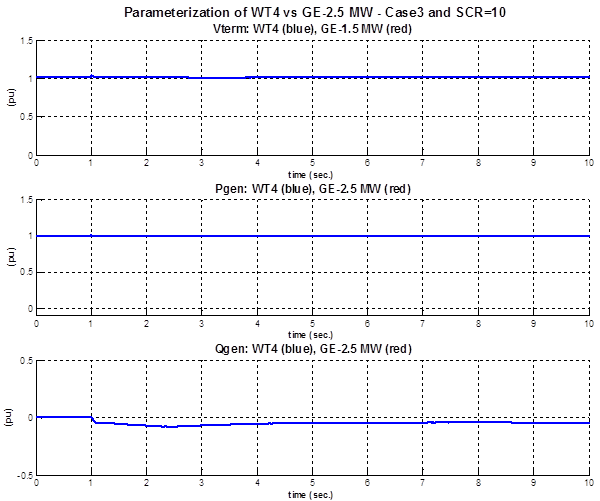
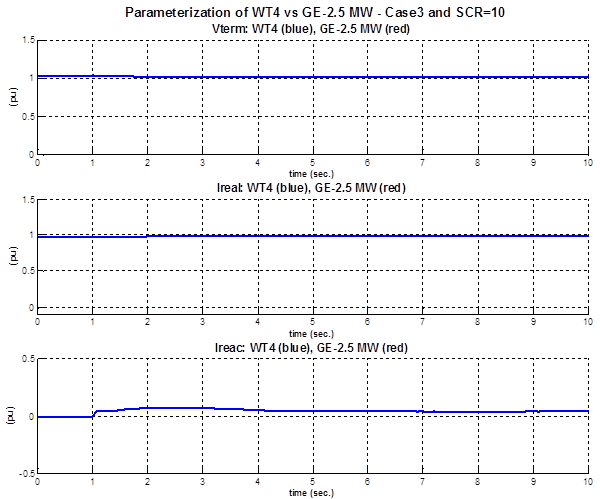
Parameterization – PSSE Environment
The parameter values shown in the table resulted from a compromise between the simulated cases (i.e. SCR 5 and SCR 10) and network conditions (i.e. fault, under- and over frequency)
|
There are four generic wind turbine models in PSSE for a type 4 wind turbine (WT4). These models are WT4G1 and WT4E1. The WT4G1 model includes the generator and converters dynamics. The WT4E1 model contains the electrical control model for the type 4 wind generator. The values for the parameters resulted from a compromise between the two cases (SCR 5 and SCR 10). The set of parameters had to be tuned to satisfactory match the results of dynamic simulation for the VSM and the generic WT4 model for both SCR cases. | |||||||||||||||||||||||||||||||||||||||||||||||||||||||||||||||||||||||||||||||||||||||||||||||||||||||||||||||||
Parameterization: Case 1 – Fault Event
Parameterization of WT4 vs GE-2.5 MW – Case 1 and SCR=5
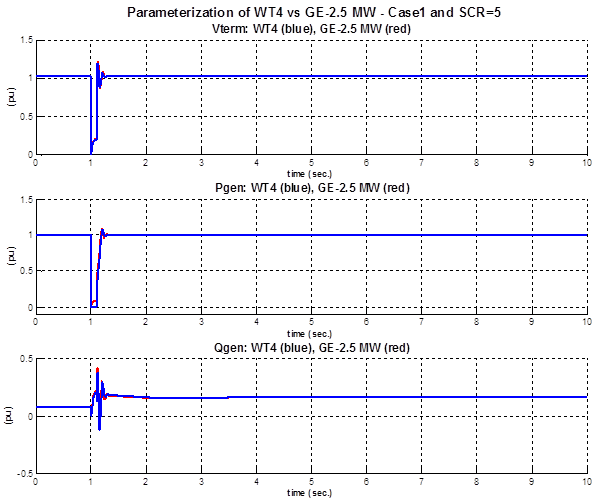
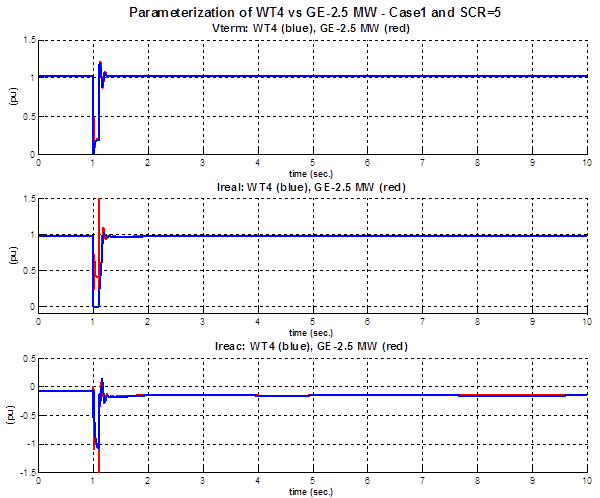
Parameterization of WT4 vs GE-2.5 MW – Case 1 and SCR=10
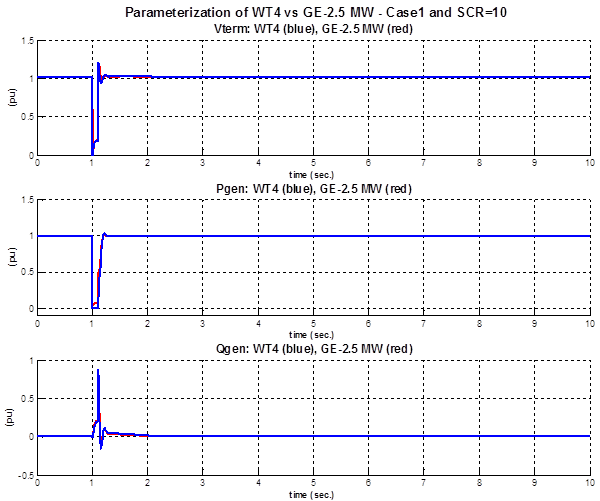
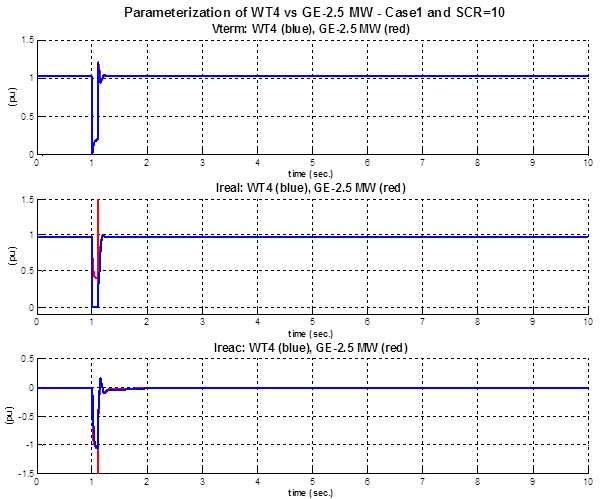
Parameterization: Case 2 – Under-Frequency Event
Parameterization of WT4 vs GE-2.5 MW – Case 2 and SCR=5
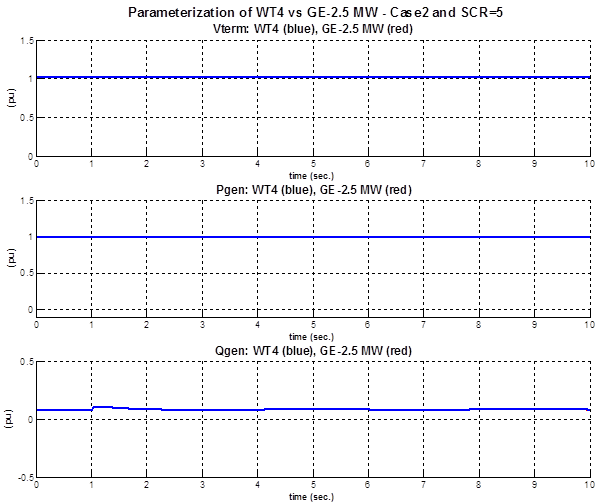
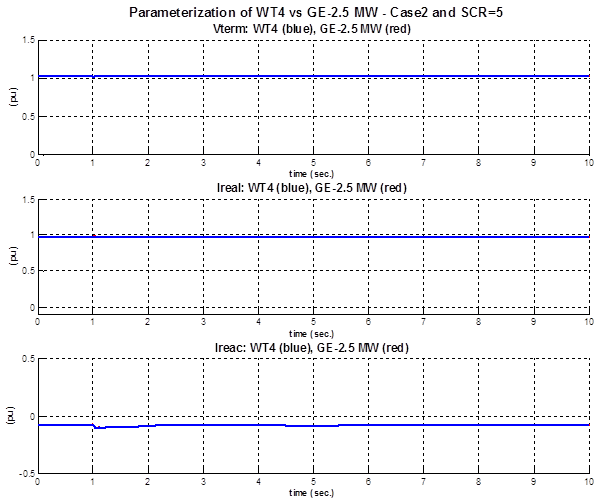
Parameterization of WT4 vs GE-2.5 MW – Case 2 and SCR=10
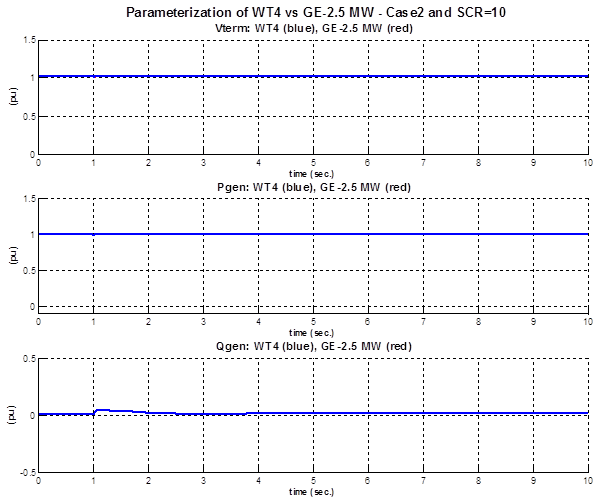
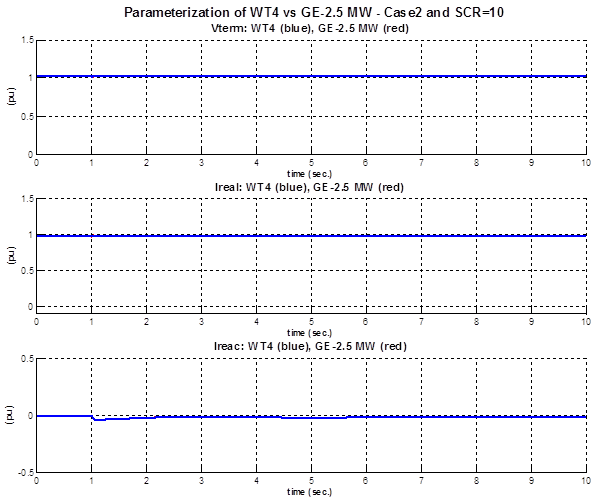
Parameterization: Case 3 – Over-Frequency Event
Parameterization of WT4 vs GE-2.5 MW – Case 3 and SCR=5
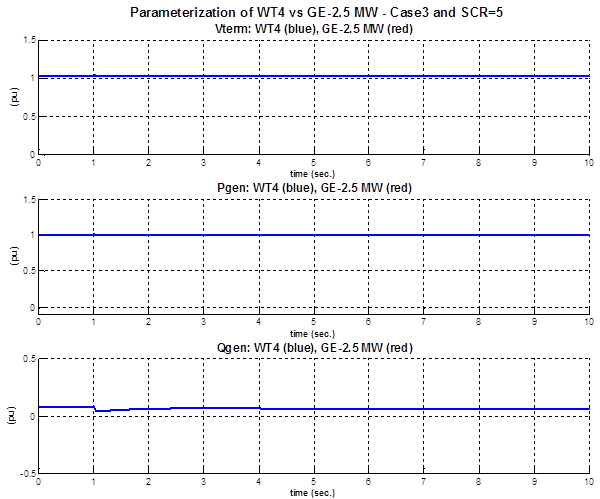
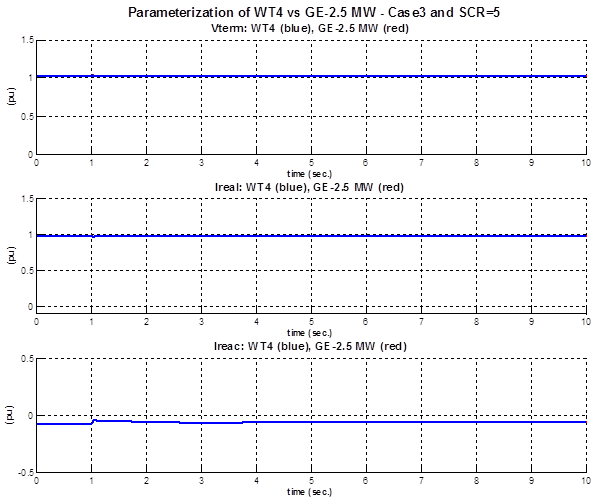
Parameterization of WT4 vs GE-2.5 MW – Case 3 and SCR=10
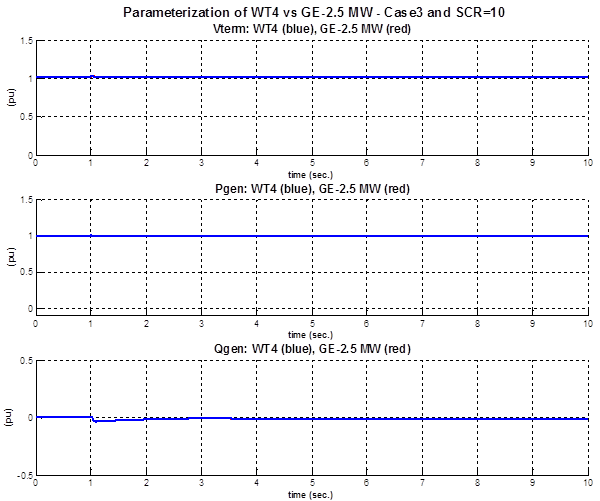
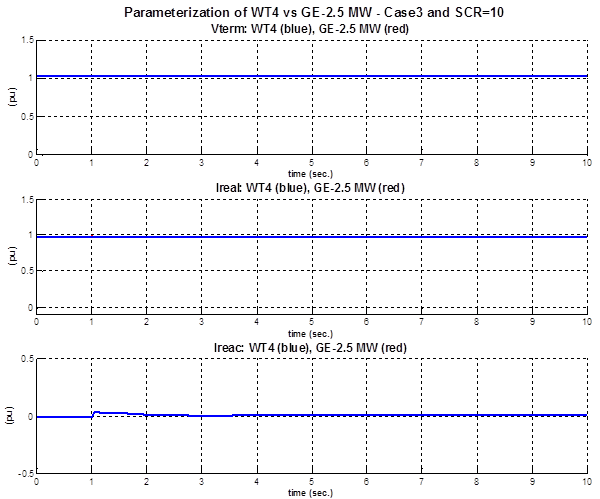
Results Validation
In all figures, the response of the generic model matches the response of the VSM in the frequency range of interest. Thus, both the PSLF and the PSSE models are an appropriate representation of the GE 2.5 MW WTG’s behavior for fundamental frequency analysis.
Vendor Specific Model Validation
No data available
